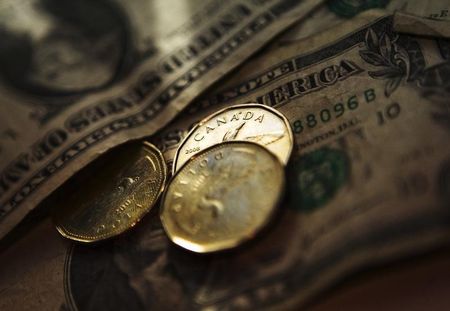The dollar strengthened against major peers during Asian trade after a strong US jobs report prompted traders to price in higher interest rates for a longer period.
The Australian dollar erased early losses after a report showed services activity picked up in key trading partner China. The yuan also initially rose, but then fell back to a six-month low.
Meanwhile, the Turkish lira fell more than 1%, continuing its slide since the re-election of President Tayyip Erdogan, despite the appointment of the highly regarded Mehmet Simsek as finance minister.
The dollar was supported by higher Treasury yields after it emerged on Friday that public and private sector payrolls rose by 339,000 in May.
The U.S. currency rose 0.04% to 140.01 yen, while the 10-year Tokyo Treasury yield rose more than 3 basis points to 3.727%. The dollar rose 0.84% against the yen on Friday.
The euro fell 0.08% to USD 1.06995, extending a 0.51% slide from the previous session.
Although U.S. employment growth was stronger than expected in May, wage pressures eased and the unemployment rate rose from a 53-year low, giving the Federal Reserve a chance to revisit its rate hike campaign at its upcoming June 13-14 meeting. As last week some officials had expressed their desire.
However, those bets were pushed back to July, and traders abandoned their bets on interest rate cuts later in the year.
CME Group’s FedWatch tool shows interest rate traders are betting on 1 in 4 rate hikes next week, up from 2 in 3 a week ago. In July, markets are betting 70% on interest rates, which will be at least a quarter point higher than they are now.
“The market sentiment is that if the stock market continues to rise beyond June, the central bank will have to hike not once, but multiple times,” said Naka Matsuzawa, chief strategist at Nomura Securities in Tokyo.
“The dollar is still up.”
The Aussie was flat at $0.6606, recovering from early losses of 0.25%, helped by fresh evidence of China’s recovery from the pandemic. The Caixin/S&P Global Services Private Sector Purchasing Managers’ Index (PMI) rose to 57.1 in May from 56.4 in April – in contrast to the official PMI released last week, which showed slower growth.
The yuan, which rose to gains following the data, weakened again as the European morning approached. The US dollar was 0.17% stronger at 7.1202 yuan in offshore trade, after hitting a six-month high of 7.1404 on Thursday.
The Canadian dollar held its own against its U.S. counterpart amid a more than 1% increase in crude oil prices after Saudi Arabia announced its biggest production cut. The greenback was flat at C$1.3436 after hitting a two-week low of C$1.3408 on Friday.
The Turkish lira fell to 21.14 per dollar, close to last week’s low of 21.80.
Initial reaction to the appointment of Simcek, who won market confidence during his tenure as finance minister and deputy prime minister between 2009 and 2018, was tumultuous, with newly elected Erdogan’s government saying it would avoid unusual rate cuts in the face of steep price cuts. Inflation undermined the currency.

“Passionate analyst. Thinker. Devoted twitter evangelist. Wannabe music specialist.”







More Stories
US economic growth is weaker than expected
Blinken: China's dissent must be handled responsibly
Research on opportunities for the horticultural business community in the United States